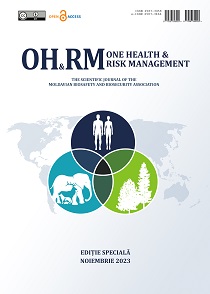Abstract
Introduction. Lentivirus particles are commonly employed as gene delivery vectors due to their ability to transduce both dividing and non-dividing cells efficiently. Lately, there have been alterations made to lentivirus particles so that they can express heterologous envelope proteins on their surface. This ability has been exploited to produce lentivirus particles pseudotyped with the SARS-CoV-2 Spike glycoprotein.
Aim. The aim of the study was to produce lentivirus particles pseudotyped with the SARS-CoV-2 Spike glycoprotein for use in neutralisation or drug antiviral activity assays.
Material and methods. A second-generation HIV-LV system was used to produce lentivirus particles pseudotyped with SARS-CoV-2 Spike glycoprotein. The lentiviral transfer plasmid plVTHM encoding for the reporter gene eGFP, the HIV packaging plasmid psPAX2 encoding for gag-pol, and a plasmid carrying the sequence encoding for the structure glycoprotein Spike, pcDNA3-SARS-CoV-2-Spike-D614GΔ19, were used. The plasmid sequence encoding for eGFP was flanked by long terminal repeats to facilitate host genome integration. To ensure controlled transduction of the lentivirus SARS-CoV-2, a lentivirus expressing Vesicular Stomatitis Virus (VSV) envelope was produced with the same protocol used for the lentivirus SARS-CoV-2 but replacing the plasmid coding for the Spike proteins with the plasmid pMD2.G encoding for the VSV envelope. The VSV Lentivirus was used as a positive control of transduction since it can infect both cell lines HEK 293-ACE2 and HEK 293. In contrast, SARS-CoV-2 lentivirus can infect only HEK 293 expressing ACE2 receptor on the membrane. After transduction, the lentivirus particles pseudotyped with the SARS-CoV-2 Spike glycoprotein were harvested from the culture medium, purified and stored at -80°C until further use.
Results. The lentivirus preparations, VSV and SARS-CoV-2, were titred by transducing HEK 293-ACE2 cells with 200 µl of 2-fold viral preparation dilutions and analysed after 72 hours by flow cytometry. SARS-CoV-2 preparation had a titer around ~105 TU/ml (average measured on 5 independent experiments of viral preparation). This titer was about one order of magnitude lower than those achieved with VSV lentivirus, which obtained a titer of around ~106 TU/ml. The lentivirus particles pseudotyped with SARS-CoV-2 Spike glycoprotein produced in this study carried the mutation D614G accompanied by the deletion (Δ19) of the last 19 amino acids at the C-terminal domain, corresponding to the ER-retention motif. This variant has been demonstrated to increase the pseudotyping efficiency in several studies. The deletion region is located at the cytoplasmic region and appears to remove the steric interference given by the cytoplasmic tail with the viral capsid.
Conclusions. The specificity of the SARS-CoV-2 lentivirus was demonstrated by its ability to infect only cells expressing the ACE2 receptor on the membrane. The lentivirus particles pseudotyped with SARS-CoV-2 Spike glycoprotein produced in this study provide a specific and efficient tool for neutralisation or drug antiviral activity assays to evaluate the efficacy of potential treatments against SARS-CoV-2 as well as to identify potential therapeutics for COVID-19.
|
 Views: 181|
|
Views: 181|
|
This work is licensed under a Creative Commons Attribution 4.0 International License.

